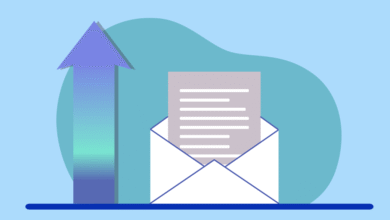
On paper, writing about yourself should be the easiest thing in the world. However, when it comes to putting pen to that paper and writing a personal statement for your CV, it suddenly seems a lot harder.
The personal statement is your first impression to hiring managers and recruiters, so it’s understandable that you’re anxious about getting it right. At the same time, there are lots of ways to get it wrong.
In this blog, we look at what you need to do to write an emphatic personal statement, with expert advice and examples for you to draw from.
What is a personal statement?
Your personal statement is essentially a short introduction to yourself as a professional. It should be at the top of your CV, and succinctly cover who you are, what you’re good at and what you want to do next. See it as a brief opportunity to pitch yourself to a potential employer.
While your CV will probably be first scanned by an Applicant Tracking System (ATS) tool to verify your suitability for the vacancy, the personal statement will be the first thing a hiring manager checks when CV reaches them.
As a result, writing a strong personal statement will significantly your chances of being invited for an interview.
Examples of what your personal statement should include
Your personal statement may only be one short paragraph, but that makes the structure even more important. You’ll need to summarise who you and what you’ll bring to the table, all while ensuring it’s relevant for the role.
The best way to do this is to break down your personal statement into three parts:
- Introduction – start by explaining who you are and what level of experience you have. For example: “I’m a hands-on Finance Manager with strong stakeholder engagement skills and a results-driven attitude.”
- Skills and experience – Outline your key skills and evidence the achievements which set you apart from the competition. For example: “With six years’ industry experience, I’m able to increase visibility within a business, drive efficiencies and implement cost-saving measures that increase profits and provide a greater return on investment.”
- Ambitions for the future – Finish with what you’re looking to achieve next in your career, ensuring it aligns with the role. This will instantly indicate to the hiring manager that you should be shortlisted for an interview. For example: “I would now like to develop my skills in a global business environment, where I can progress my career within accountancy.”
Following this plan will help you to hit all the key points you need to get across, while keeping things short and sweet.
Examples of how to write your personal statement with AI tools
Consider using ChatGPT or Copilot to help you write the first draft of your personal statement. Provide it with a few bullet points that cover the three sections on the left, or ask it to write something based on your career history.
Alternatively, you can write the first draft yourself, before asking an AI tool to suggest improvements, based on the job description.
What to remember
- Adopt a formal but warm tone – your first impression should be professional.
- Don’t write more than 100
- Include relevant action verbs to evidence achievements – this will convey your success in previous roles and what you can bring to the organisation.
- Use keywords from the job description – the Applicant Tracking System will search for anything relevant to the role. Extract keywords and include them in your introduction, but don’t pack too many in.
- Tailor your personal statement to each role you apply for – changing this every time won’t take long, but is definitely worth the effort.
- Keep everything in the first person – just as with the rest of your CV, consistency is key.
Next steps
Once you’ve written and proofread your personal statement, both by yourself and with the help of the AI tool, it’s time to move onto the Employment History section of your CV.
Learn the best way to describe your accomplishments and responsibilities to date in our next blog.



